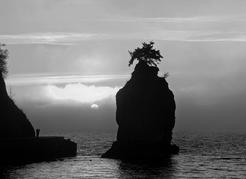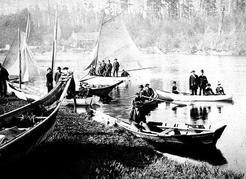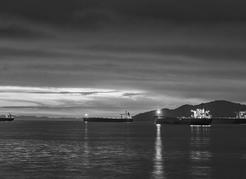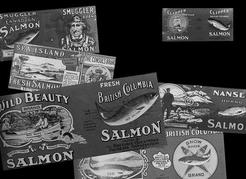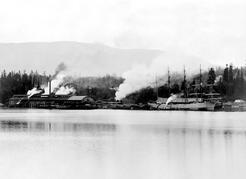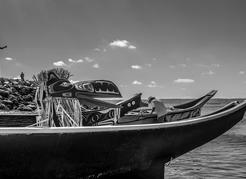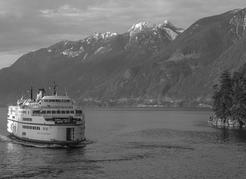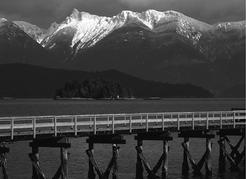Views of the Salish Sea
One Hundred and Fifty Years of Change around the Strait of Georgia
by Howard Macdonald Stewart
Interweaving geography, biology and resource economics with history, this is a deft examination of the Strait of Georgia from the 1850s to the modern era.
It is not mere coincidence that two-thirds of the population of British Columbia occupies lands bordering its great inland sea, the Strait of Georgia, and connected waterways collectively known as the North Salish Sea. Averaging forty kilometres in width and stretching some three hundred kilometres from Vancouver and Victoria in the south to Powell River and Campbell River in the north, the North Salish Sea has long sheltered a bounty of habitable lands and rich maritime resources ideal for human settlement. While the region's intricate shoreline of peninsulas, promontories, estuaries and plains has been occupied by human communities for millennia, the last century and a half has been an unprecedented age of rapid colonization, industrialization and globalization. Many books have been written about individual communities and industries around the great waterway, but none have examined the region as a geographical unit with its own dynamic systems, which can best be understood as an interrelated whole.
The Strait of Georgia has influenced human affairs, even as people have changed the Strait, in a complex relationship that continues today. British colonization and the commodification of the Strait's resources launched a resource rush around the sea that began in earnest in the decades before the First World War, often at the expense of Indigenous populations. Coal mining developed earliest and grew rapidly. Fishing, lumbering and metal mining were also established by the 1880s and soon experienced exponential growth. From the earliest salmon canneries to today's cruise ship industry, all have depended on the Strait to ensure economic prosperity and the easy movement of people and goods.
As competition for space and resources increases, and as the effects of climate change are amplified, the pressure on this ecologically vulnerable area will only intensify. If this precious sea is to be passed to future generations with any semblance of its inherent richness and diversity intact, then it will need to be effectively managed and vigorously defended. The first step is to understand the complex story of the region, making this essential reading not only for history buffs but anyone with an interest in the future of British Columbia.

Views of the Salish Sea: One Hundred and Fifty Years of Change around the Strait of Georgia is available in hardcover from your favourite bookstore or directly from HarbourPublishing.com.
ISBN 13: 978-1-55017-803-6
ISBN 10: 1-55017-803-2
100 B&W photographs and maps
8.5 x 11 - 288 pp
CAD$39.95 • USD$39.95
An ebook edition is also available from Amazon, Kobo, Apple iBooks and other ebook retailers.


